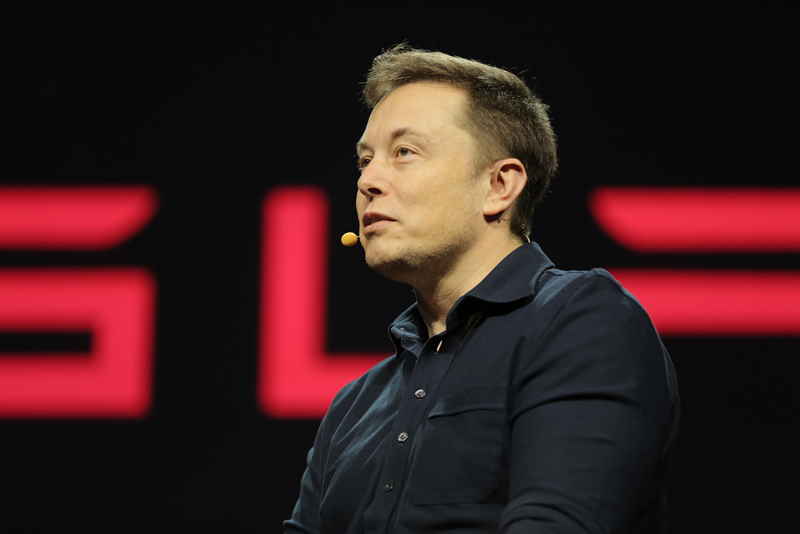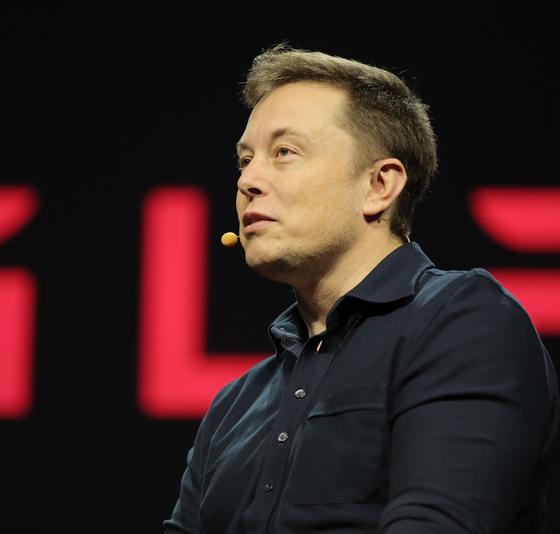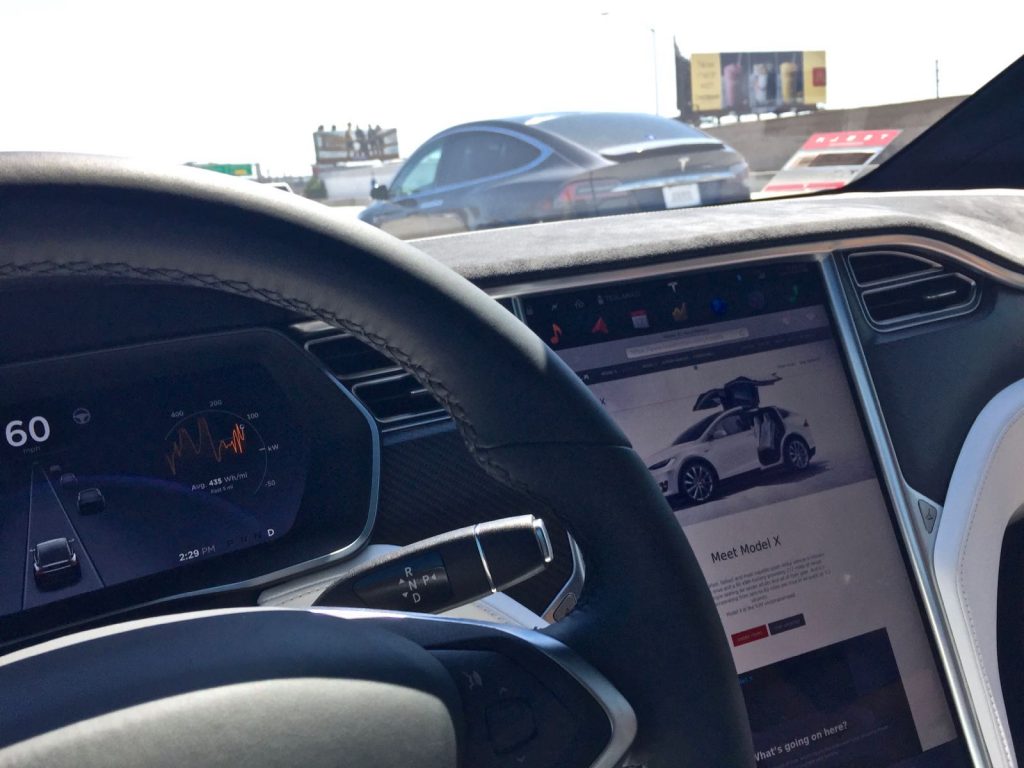Elon Musk’s cautionary statements about uncontrolled experimentation with artificial intelligence (AI) have caused some to ridicule him as a fear-monger, and have given many in the mainstream press the idea that he is opposed to using AI, which is very far from the truth. In fact, AI is a major component of Tesla’s Autopilot system, and the company applies it in several other areas as well.
It was only recently that Tesla publicly revealed that it is working on its own AI hardware. At the NIPS machine learning conference in December, Elon Musk announced that Tesla is “developing specialized AI hardware that we think will be the best in the world.” The company has offered few details, but it’s widely assumed that the main application will be processing the algorithms for Tesla’s Autopilot software.
As Bernard Marr reports in a recent article in Forbes, there’s little doubt that Tesla is way ahead of its potential rivals in the data-gathering department. Every Model S and X built with the Autopilot hardware suite, which was introduced in September 2014, has the potential to become self-driving, and all Tesla vehicles, Autopilot-enabled or not, continually gather data and send it to the cloud. The company has many more sensors on the roads than any of its Detroit or Silicon Valley rivals, and the number will mushroom when Model 3 production hits its stride.
Tesla is crowd-sourcing data not only from its vehicles, but could one day obtain data on its drivers through internal cameras that detect hand placement on instruments or a person’s state of alertness. The company uses the information not only to improve Autopilot by generating data-dense maps, but also to diagnose driving behavior. Many believe that this sort of data will prove to be a valuable commodity that could be sold to third parties (much as data on web-browsing habits is today). McKinsey and Company has estimated that the market for vehicle-gathered data could be worth $750 billion a year by 2030.
Forbes explains that the AI built into Tesla’s system operates at several levels. Machine learning in the cloud educates the entire fleet, while within each individual vehicle, “edge computing” can make decisions about actions a car needs to take immediately. There’s also a third level of decision-making, in which cars can form networks with other Tesla vehicles nearby in order to share local information. In the future, when there are lots of autonomous cars on the road, these networks could also interface with cars from other makers, and systems such as traffic cameras, road-based sensors, and mobile phones.
At this point, no one knows what new forms of AI technology the mad scientists in Palo Alto are cooking up, but Forbes found some clues on the Facebook page of Tesla’s hardware partner Nvidia: “In contrast to the usual approach to operating self-driving cars, we did not program any explicit object detection, mapping, path planning or control components into this car. Instead, the car learns on its own to create all necessary internal representations necessary to steer, simply by observing human drivers.”
This unsupervised learning model contrasts with the more familiar approach of supervised learning, in which algorithms are trained beforehand about right or wrong decisions. Each approach has its pros and cons, and it’s likely that Tesla’s strategy includes both.
Forbes reports that Tesla’s use of AI is not limited to Autopilot – the company employs machine learning in the design and manufacturing processes, to process customer data, and even to scan the text in online forums for insights into commonly-reported problems. It’s ironic that some in the press choose to portray Elon Musk as an AI Luddite, when in fact Tesla may be one of the most sophisticated users of the technology.
===
Note: Article originally published on evannex.com, by Charles Morris
Source: Forbes

Elon Musk
Elon Musk’s X will start using a Tesla-like software update strategy
The initiative seems designed to accelerate updates to the social media platform, while maintaining maximum transparency.

Elon Musk’s social media platform X will adopt a Tesla-esque approach to software updates for its algorithm.
The initiative seems designed to accelerate updates to the social media platform, while maintaining maximum transparency.
X’s updates to its updates
As per Musk in a post on X, the social media company will be making a new algorithm to determine what organic and advertising posts are recommended to users. These updates would then be repeated every four weeks.
“We will make the new 𝕏 algorithm, including all code used to determine what organic and advertising posts are recommended to users, open source in 7 days. This will be repeated every 4 weeks, with comprehensive developer notes, to help you understand what changed,” Musk wrote in his post.
The initiative somewhat mirrors Tesla’s over-the-air update model, where vehicle software is regularly refined and pushed to users with detailed release notes. This should allow users to better understand the details of X’s every update and foster a healthy feedback loop for the social media platform.
xAI and X
X, formerly Twitter, has been acquired by Elon Musk’s artificial intelligence startup, xAI last year. Since then, xAI has seen a rapid rise in valuation. Following the company’s the company’s upsized $20 billion Series E funding round, estimates now suggest that xAI is worth tens about $230 to $235 billion. That’s several times larger than Tesla when Elon Musk received his controversial 2018 CEO Performance Award.
As per xAI, the Series E funding round attracted a diverse group of investors, including Valor Equity Partners, Stepstone Group, Fidelity Management & Research Company, Qatar Investment Authority, MGX, and Baron Capital Group, among others. Strategic partners NVIDIA and Cisco Investments also continued support for building the world’s largest GPU clusters.
News
Tesla FSD Supervised wins MotorTrend’s Best Driver Assistance Award
The decision marks a notable reversal for the publication from prior years, with judges citing major real-world improvements that pushed Tesla’s latest FSD software ahead of every competing ADAS system.

Tesla’s Full Self-Driving (Supervised) system has been named the best driver-assistance technology on the market, earning top honors at the 2026 MotorTrend Best Tech Awards.
The decision marks a notable reversal for the publication from prior years, with judges citing major real-world improvements that pushed Tesla’s latest FSD software ahead of every competing ADAS system. And it wasn’t even close.
MotorTrend reverses course
MotorTrend awarded Tesla FSD (Supervised) its 2026 Best Tech Driver Assistance title after extensive testing of the latest v14 software. The publication acknowledged that it had previously criticized earlier versions of FSD for erratic behavior and near-miss incidents, ultimately favoring rivals such as GM’s Super Cruise in earlier evaluations.
According to MotorTrend, the newest iteration of FSD resolved many of those shortcomings. Testers said v14 showed far smoother behavior in complex urban scenarios, including unprotected left turns, traffic circles, emergency vehicles, and dense city streets. While the system still requires constant driver supervision, judges concluded that no other advanced driver-assistance system currently matches its breadth of capability.
Unlike rival systems that rely on combinations of cameras, radar, lidar, and mapped highways, Tesla’s FSD operates using a camera-only approach and is capable of driving on city streets, rural roads, and freeways. MotorTrend stated that pure utility, the ability to handle nearly all road types, ultimately separated FSD from competitors like Ford BlueCruise, GM Super Cruise, and BMW’s Highway Assistant.
High cost and high capability
MotorTrend also addressed FSD’s pricing, which remains significantly higher than rival systems. Tesla currently charges $8,000 for a one-time purchase or $99 per month for a subscription, compared with far lower upfront and subscription costs from other automakers. The publication noted that the premium is justified given FSD’s unmatched scope and continuous software evolution.
Safety remained a central focus of the evaluation. While testers reported collision-free operation over thousands of miles, they noted ongoing concerns around FSD’s configurable driving modes, including options that allow aggressive driving and speeds beyond posted limits. MotorTrend emphasized that, like all Level 2 systems, FSD still depends on a fully attentive human driver at all times.
Despite those caveats, the publication concluded that Tesla’s rapid software progress fundamentally reshaped the competitive landscape. For drivers seeking the most capable hands-on driver-assistance system available today, MotorTrend concluded Tesla FSD (Supervised) now stands alone at the top.
News
Elon Musk’s Grokipedia surges to 5.6M articles, almost 79% of English Wikipedia
The explosive growth marks a major milestone for the AI-powered online encyclopedia, which was launched by Elon Musk’s xAI just months ago.

Elon Musk’s Grokipedia has grown to an impressive 5,615,201 articles as of today, closing in on 79% of the English Wikipedia’s current total of 7,119,376 articles.
The explosive growth marks a major milestone for the AI-powered online encyclopedia, which was launched by Elon Musk’s xAI just months ago. Needless to say, it would only be a matter of time before Grokipedia exceeds English Wikipedia in sheer volume.
Grokipedia’s rapid growth
xAI’s vision for Grokipedia emphasizes neutrality, while Grok’s reasoning capabilities allow for fast drafting and fact-checking. When Elon Musk announced the initiative in late September 2025, he noted that Grokipedia would be an improvement to Wikipedia because it would be designed to avoid bias.
At the time, Musk noted that Grokipedia “is a necessary step towards the xAI goal of understanding the Universe.”
Grokipedia was launched in late October, and while xAI was careful to list it only as Version 0.1 at the time, the online encyclopedia immediately earned praise. Wikipedia co-founder Larry Sanger highlighted the project’s innovative approach, noting how it leverages AI to fill knowledge gaps and enable rapid updates. Netizens also observed how Grokipedia tends to present articles in a more objective manner compared to Wikipedia, which is edited by humans.
Elon Musk’s ambitious plans
With 5,615,201 total articles, Grokipedia has now grown to almost 79% of English Wikipedia’s article base. This is incredibly quick, though Grokipedia remains text-only for now. xAI, for its part, has now updated the online encyclopedia’s iteration to v0.2.
Elon Musk has shared bold ideas for Grokipedia, including sending a record of the entire knowledge base to space as part of xAI’s mission to preserve and expand human understanding. At some point, Musk stated that Grokipedia will be renamed to Encyclopedia Galactica, and it will be sent to the cosmos.
“When Grokipedia is good enough (long way to go), we will change the name to Encyclopedia Galactica. It will be an open source distillation of all knowledge, including audio, images and video. Join xAI to help build the sci-fi version of the Library of Alexandria!” Musk wrote, adding in a later post that “Copies will be etched in stone and sent to the Moon, Mars and beyond. This time, it will not be lost.”











